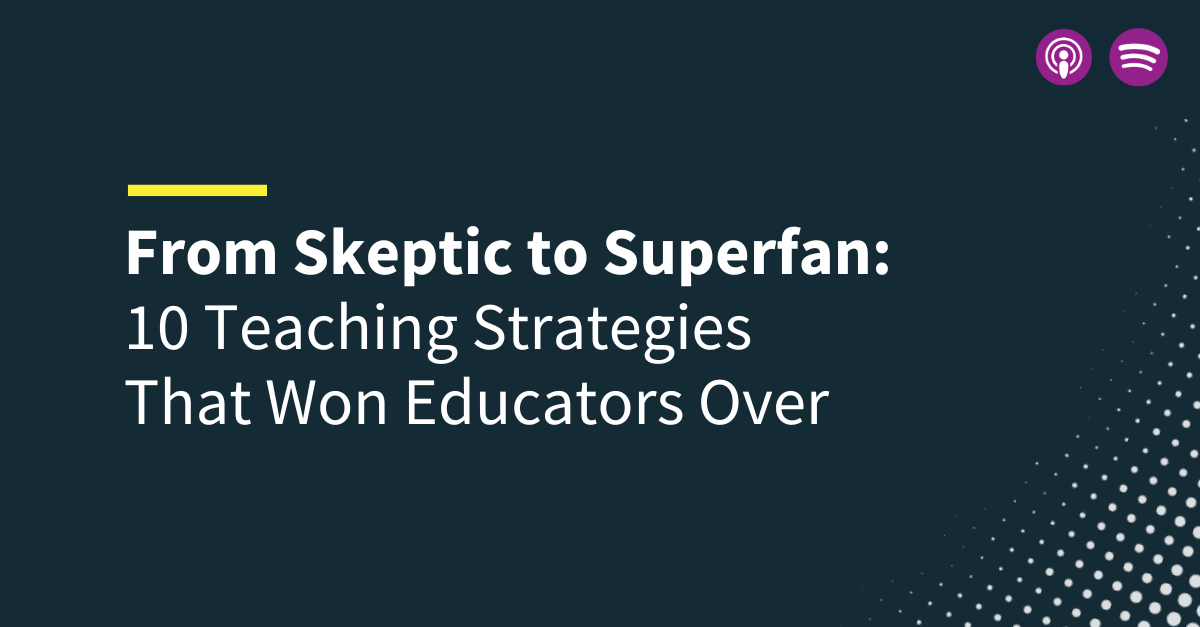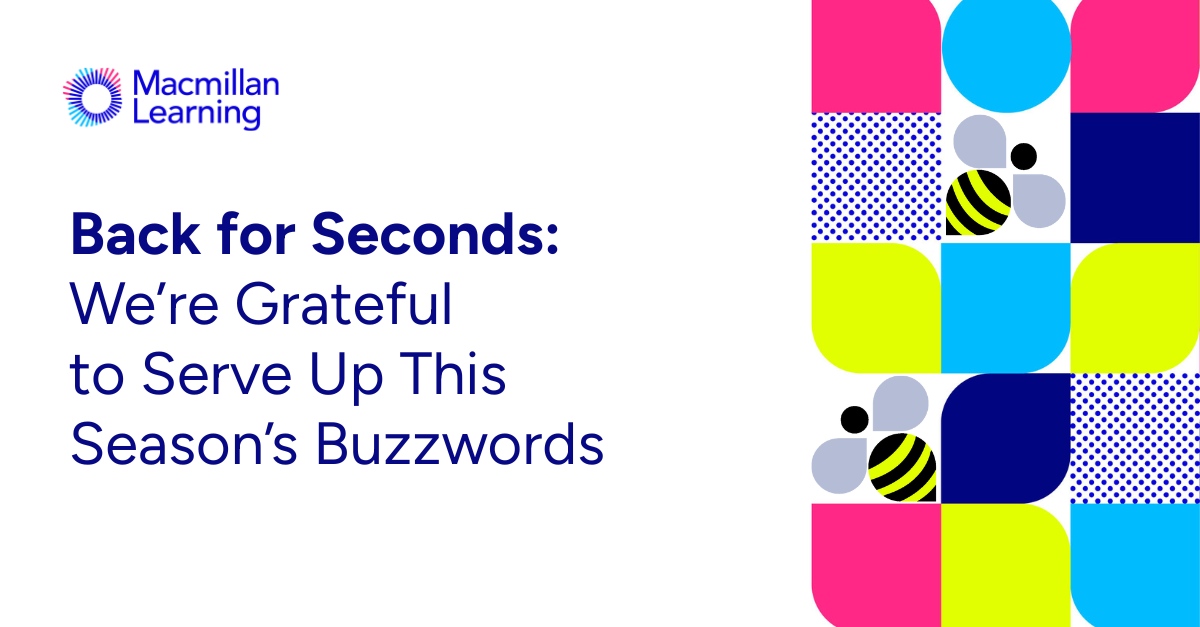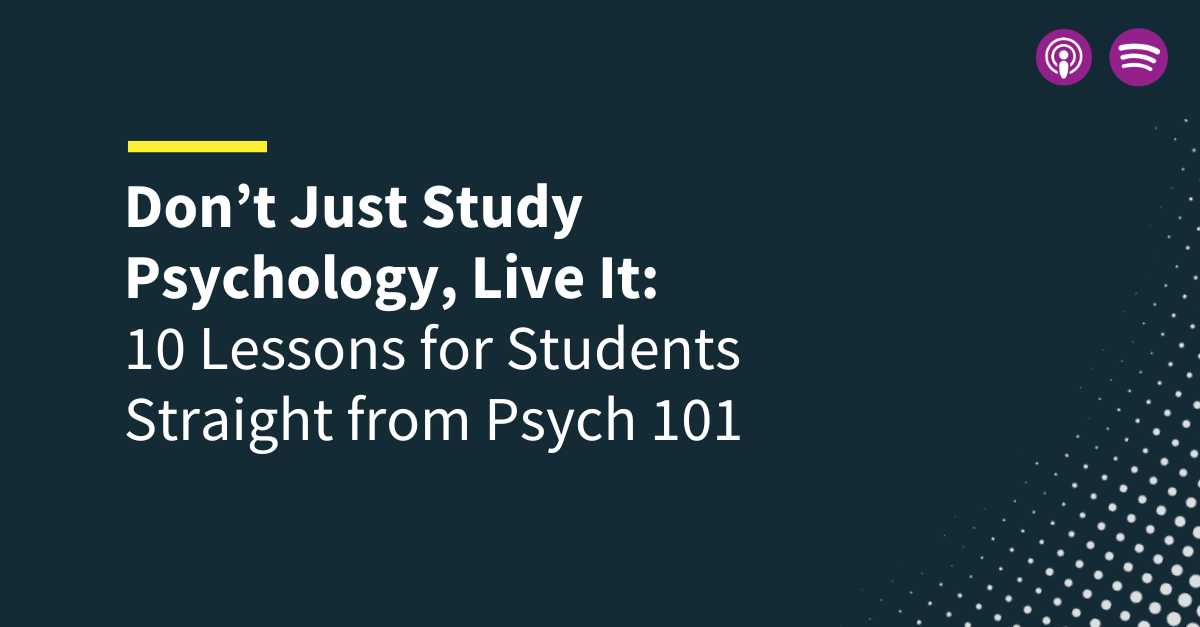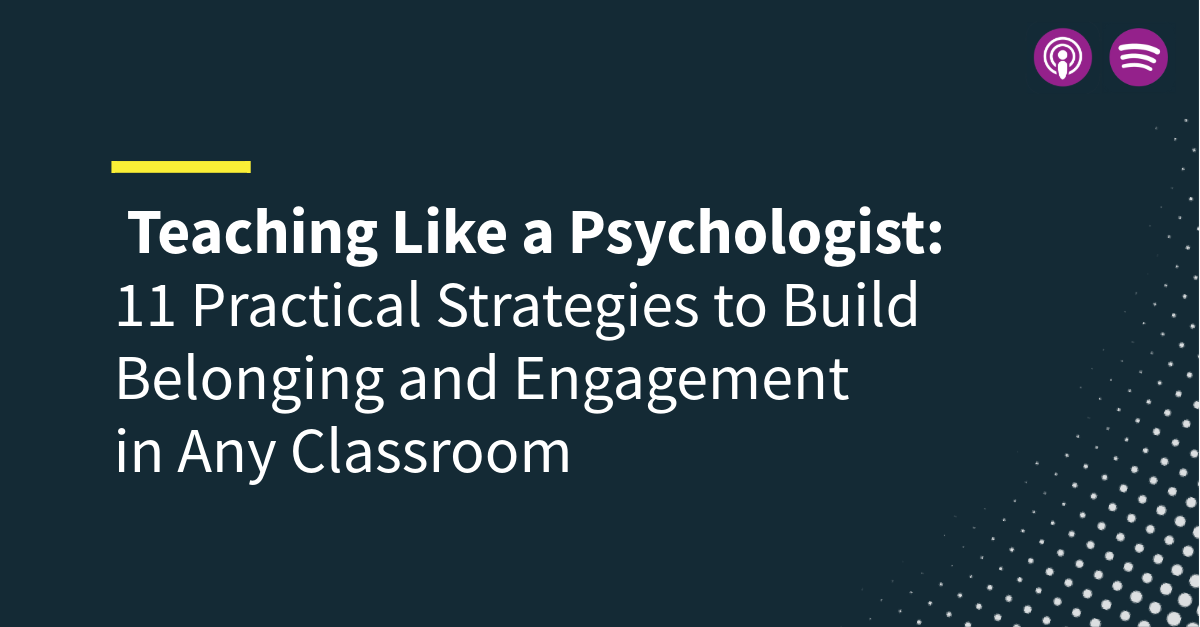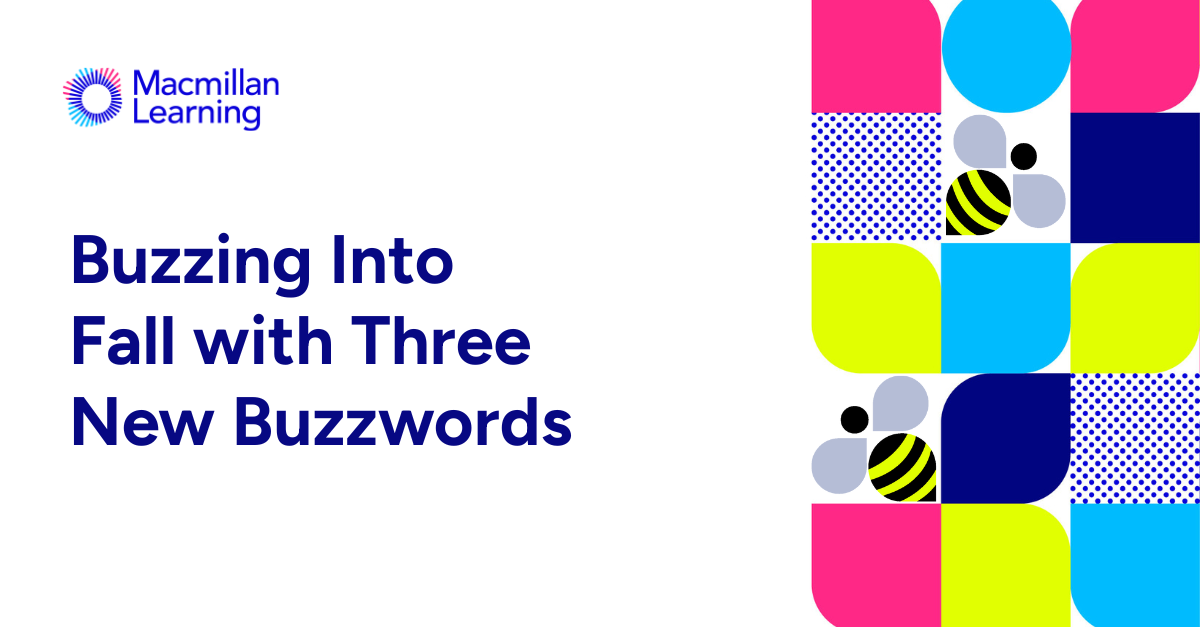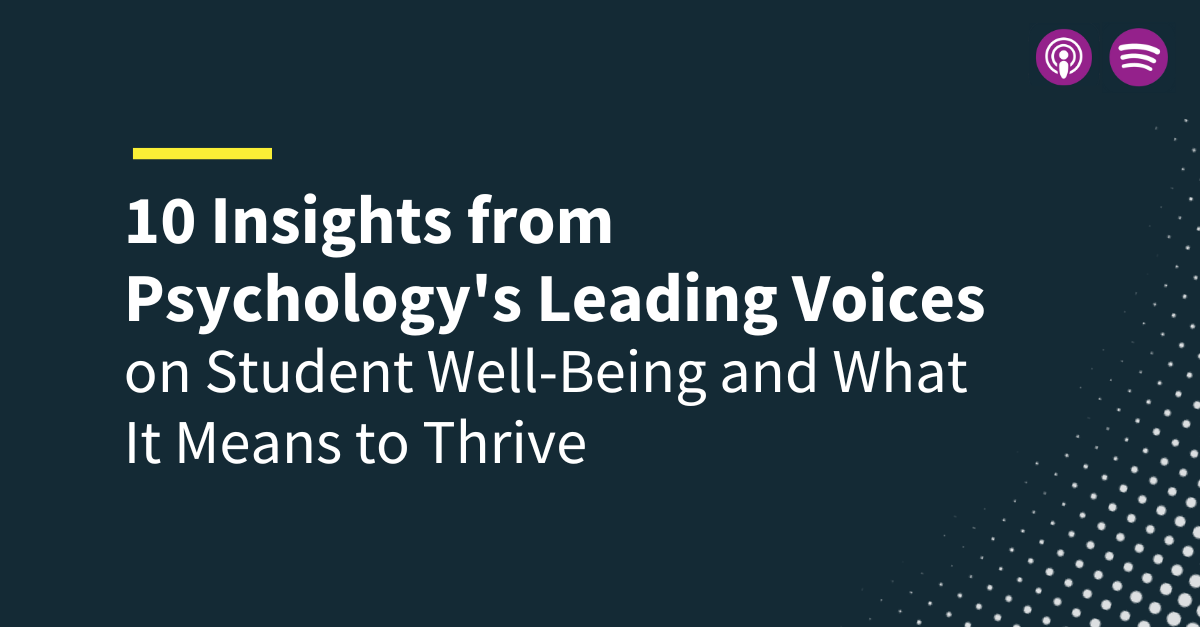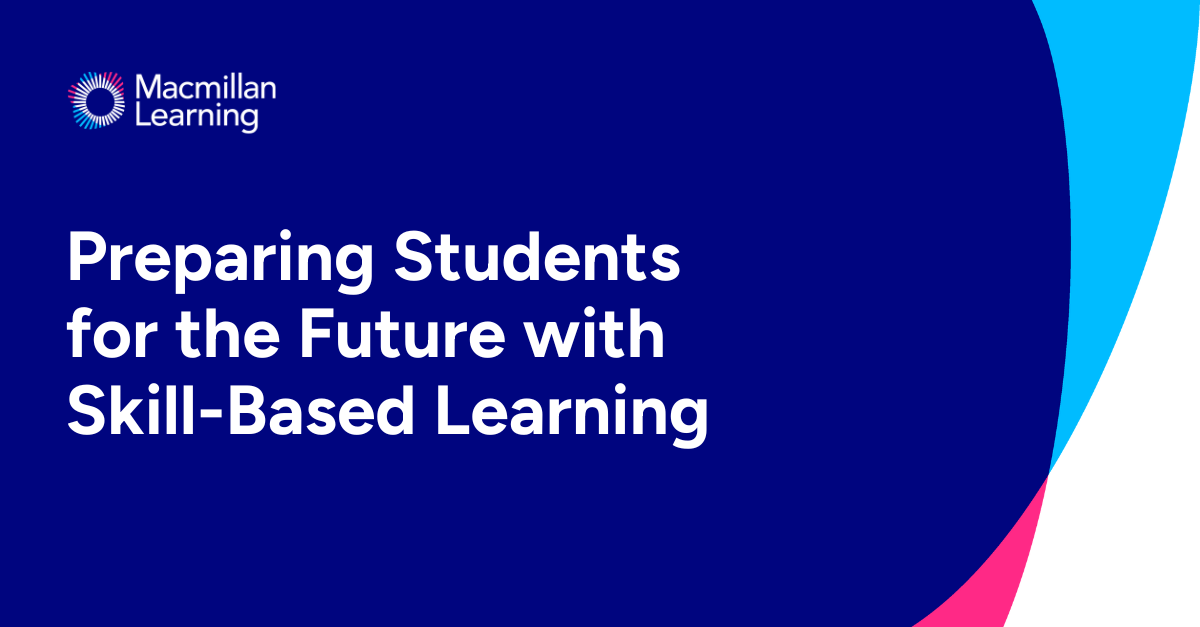-
About
Our Story
back- Our Mission
- Our Leadershio
- Accessibility
- Careers
- Diversity, Equity, Inclusion
- Learning Science
- Sustainability
Our Solutions
back
-
Community
Community
back- Newsroom
- Webinars on Demand
- Digital Community
- The Institute at Macmillan Learning
- English Community
- Psychology Community
- History Community
- Communication Community
- College Success Community
- Economics Community
- Institutional Solutions Community
- Nutrition Community
- Lab Solutions Community
- STEM Community
- Newsroom
- Macmillan Community
- :
- Newsroom
- :
- Learning Stories Blog
Learning Stories Blog
Options
- Mark all as New
- Mark all as Read
- Float this item to the top
- Subscribe
- Bookmark
- Subscribe to RSS Feed
Learning Stories Blog
Showing articles with label Podcast.
Show all articles
Macmillan Employee
04-30-2025
12:13 PM
We’ve all seen it: the perfectly polished, eerily impersonal student essay that practically screams, “Written by robots.” And we get it. AI can make it easy. Too easy.
But just because students can use AI doesn’t mean we have to hand over our classrooms to the singularity. The real question for educators isn't whether to use AI; rather, it’s how to use it thoughtfully without losing sight of pedagogy, purpose or students' real voices.
At The What and Who of EDU, we asked educators across the country to share how they’re building smart, structured ways to use AI in their classrooms—without letting the robots steal the show. The result? Ten practical, classroom-tested strategies for keeping AI an assistant, not the boss.
🎧 Be sure to check out the full podcast episode From Copy-Paste to Critical Thinking: 10 AI Guardrails and Hacks Every Educator Needs on Apple or Spotify to hear all the tips straight from the instructors themselves. Here's a preview of what they shared:
1. Use AI as Your Digital Assistant
Dr. Erika Martinez, Professor of Economics at the University of South Florida, doesn’t try to do it all, she lets AI take the busywork off her plate. She treats AI like an extra set of hands that frees her up for the real work. She explains:
“I use AI to help streamline a lot of the administrative tasks. I use it to revise emails and classroom announcements, create study guides from my lecture notes, help me develop rubrics for assessments that I've generated, and I also use it for many personal tasks in my daily life, which frees up time for me to do things for work.”
Why it works: When AI handles the repetitive stuff, you get your time (and sanity) back. More energy for teaching, less drowning in admin.
2. TILT Your Assignments for Clarity
Jennifer Duncan, Associate Professor of English at Georgia State University Perimeter College, knows what seems clear to us isn’t always clear to students. She uses AI to help "tilt" her assignments and make expectations obvious. She notes:
“One of the ways that I'm currently using AI that I really love is... tilted writing assignments where we help students really unpack that assignment. As an instructor, it's sometimes hard for me to unpack all the hidden steps, so if I can take an assignment and put it into an AI and say, ‘Would you please tilt this assignment for me?’ then I've now used a tool to make this assignment more accessible.”
Why it works: Students do better work when they know exactly what "good" looks like, not just what we think we said.
3. Build Rubrics That Talk Back
Dr. Amy Goodman, Senior Lecturer in Mathematics at Baylor University, turns to AI when students want specifics about grading. She lets AI help articulate grading criteria quickly, making expectations clear and transparent. She says:
“I was playing with [AI]... and had it help me write some rubrics. It would take, for example, a 10-point umbrella category and break it down into subcategories worth 1, 3, 3, and 3 points, and then I could give criteria for what a 3-point version would look like... and then kind of continue that trend down through each of the pieces of my rubric.”
Why it works: Good rubrics remove the mystery, and AI speeds up the build. When grading expectations are clear, students stay focused, and grading gets faster.
4. Let Learning Objectives Lead
Dr. Christin Monroe, Assistant Professor of Chemistry at Landmark College, doesn’t just throw AI into her courses. She checks if it serves the lesson or distracts from it. She explains:
“It’s important to go back to what your learning objectives are and to determine whether or not the use of AI in a particular moment will go against those objectives... I asked it to give me prompts for the students to start their process of identifying a topic... because their topic selection isn't really a part of the learning objectives. It's them applying the chemistry content knowledge.”
Why it works: AI should be the GPS, not the driver. Learning goals stay in the front seat.
5. Teach AI Fire Safety First
Adriana Bryant, English Instructor at Lone Star College–Kingwood, establishes clear guidelines before integrating AI tools. She doesn’t ban AI, she builds the fire escape plan before lighting the match. She explains:
“I establish a very specific criteria and policy within my syllabus explaining to them that we will be utilizing it for certain topics, for certain assignments, but that they will be given clear instruction as to how we will use it.”
Why it works: With clear guidelines, students don’t just light matches, they learn how not to burn the house down.
6. Use the 10% Rule
Dr. Margaret Holloway, Assistant Professor of English at Clark Atlanta University, wants students to engage, not outsource. She enforces a "tiny assist" not a "do it for me" policy. She says:
“I have very strict rules about AI because I know that it's easy to disregard my own instructions, throw the assignment sheet into ChatGPT or Claude or wherever, and generate an essay. So right now I'm still sticking with my gut of being very strict with AI … 10% or less.”
Why it works: Critical thinking isn’t optional. Students can brainstorm with AI, but the real work stays theirs.
7. Prioritize Accuracy and Ethics
Betsy Langness, Psychology Professor at Jefferson Community and Technical College, sees AI as a tool, but not an excuse. She helps students prioritize accuracy and ethics in AI-assisted tasks. She reminds students:
“I just really tell students it's their responsibility to make sure that the information that they're providing is accurate... and if they use AI, let me know that they used AI, and what did they use it on.”
Why it works: Students don’t just need to use AI, they need to be able to stand behind what they submit.
8. Protect Student Voices and Stories
Julie Moore, Online Academic Advisor and First-Year Composition Instructor at Eastern University, pushes students to believe their story matters. She reminds students that no bot can tell their story better than they can, noting:
“You have a voice, and I want to hear what you have to say, not what AI has to say … You have worth and value. Your voice matters.”
Why it works: AI can generate paragraphs. It can’t replicate lived experience. Only humans can tell stories that matter.
9. Teach AI to Be a Study Buddy
Dr. Amy Goodman, Senior Lecturer in Mathematics at Baylor University, helps students write prompts that push them toward understanding, not shortcuts. She’s teaching them to use AI for inquiry, not just answers.
“I tell them I'm only going to assess your intelligence. I'm not going to assess the intelligence of any other device in the room.”
Why it works: Good prompts build real understanding. Shortcuts just build bad habits. AI can support learning, but only if students learn to ask for help, not answers.
10. Require Receipts
Adriana Bryant, English Instructor at Lone Star College–Kingwood, doesn’t just want to see the final product, she wants to know how the AI got there. She requires documentation of AI use to promote digital literacy. In other words, she wants the receipts.
“They can either do that through their own artistic abilities or they can utilize an AI image generator. But they have to document their entire input and output process within their submission.”
Why it works: Teaching students to document their AI use builds the kind of digital literacy that actually transfers to real-world tech fluency.
So What Did We Learn?
AI isn't the enemy. It's not a cheat code, a scapegoat, or your new TA (even if it’s suspiciously good at writing rubrics). It’s a tool—one that demands structure, thoughtfulness, and a lot of human intention.
🎧 Want to hear more? Listen to the full episode: From Copy-Paste to Critical Thinking: 10 AI Guardrails and Hacks Every Educator Needs on Apple Podcasts or Spotify.
Got a guardrail or hack that’s worked wonders in your classroom? Leave us a voicemail at (512) 765-4688, and you might just hear yourself in a future episode.
... View more
Macmillan Employee
04-16-2025
08:24 AM
What if high school wasn’t just about preparing for college … but already was college?
At Bard High School Early College (BHSEC), students don’t just dream about the future, they live it. From day one, they’re immersed in a culture of thinking, writing, questioning and becoming. It’s not a test-run for adulthood; rather, it’s the real thing, designed with purpose and rigor and powered by trust.
That vision is something Dr. Siska Brutsaert, principal at BHSEC Bronx, lives and breathes. With a PhD in molecular immunology and a deep passion for student-centered learning, she leads one of the newest Bard campuses with an eye toward both academic rigor and human development.
In a recent episode of The What & Who of EDU podcast, LaShawn Springer, Director of Inclusive Pedagogy at Macmillan Learning, sat down with Dr. Brutsaert to unpack what makes Bard so different; and how any school, regardless of zip code or structure, can borrow from the Bard playbook. Here are ten powerful strategies you can adopt to make your school a little more Bard-like, and a whole lot more student-centered.
1. Build a Mission-Driven Faculty.
Faculty at Bard aren’t just qualified, they’re purpose-driven. These are instructors with college-level credentials who choose to teach younger students. Why? Because they believe in transformation. Dr. Siska Brutsaert, principal at BHSEC Bronx, explained that faculty "take responsibility for cultivating these very malleable, eager, curious minds."
2. Let Students Lead with Curiosity, Not Competition
Bard avoids traditional academic hierarchies like valedictorians or class rankings. The result is a culture of exploration over comparison. Students apply to Bard by showcasing curiosity and voice—not just test scores. In your own school, consider how your systems may unintentionally reward competition over collaboration. Can you create spaces where inquiry is the prize?
3. Start with a Week of Writing and Wonder
Before diving into the syllabus, Bard schools kick off with "Writing & Thinking Week", which is a one-week immersive writing workshop inspired by the Bard Institute for Writing and Thinking. Students respond to prompts, reflect out loud and build a culture of trust. Activities like focused free writes and believing/doubting exercises help students to find their voice. Brutsaert described it as an opportunity to build a foundation: "writing can be, especially for an incoming ninth grader, intimidating... by having these informal writing workshops where you know everything is okay... it's okay to make mistakes."
4. Rethink Rigor, and Support It
Yes, Bard students complete college-level coursework by the time they graduate high school. But they also receive daily support: small classes (18-22 students), advisory periods, after-school learning centers, and built-in tutoring. Brutsaert emphasized the balance: "We're supporting the students at the same time that we're really pushing them."
5. Create Cohesive Curriculum Communities
Bard faculty don’t work in silos. Teachers from across the Bard network gather to align on what early college rigor looks like. They consult college syllabi, share best practices, and reflect on what students need to thrive in 200- and 300-level courses later. Brutsaert shared that ongoing meetups with Bard College faculty help them ask, "What are our approaches? What are the skills and competencies that our students are gonna need?"
6. Blur the High School/College Divide
At Bard, the same teacher might guide a student through both 10th grade and their first college seminar. This creates continuity in expectations, pedagogy, and mentorship. Brutsaert noted, "All of our faculty teach both in the high school program as well as in the college program."
7. Design for Belonging and Becoming
Teenagers are still, well, teenagers. Bard recognizes this and designs its model to support not just academic, but emotional growth. Students get to stay in a familiar environment with known adults even as the academic bar rises. Brutsaert described the support system: "Our teachers have office hours. We have a learning center... we know a lot of our teachers do tutoring and small group instruction during lunchtime or during their free periods."
8. Center Student Voice ... Then Help It Grow
Bard looks for students with a voice. Then it teaches them how to use it boldly. Through informal writing, collaborative workshops, and small group discussions, students learn that their ideas matter. Brutsaert explained, "You're really helping them to trust what that inner voice is and to share it really boldly and courageously."
9. Focus on the Graduate, Not Just the GPA
Brutsaert shared that the ideal BHSEC graduate is someone who can "think independently, that can think critically and evaluate sources of information... have confidence in their academic ability and also know when to ask for help."
10. Trust Young People. Seriously.
Bard challenges students because it believes in them. Brutsaert put it simply: "Trust in the ability of your students and give them agency and independence and allow them to be themselves."
Most schools aren’t Bard. But any school can start asking Bard-like questions: Are we empowering students to use their voice? Are we designing for transformation? Are we building classrooms where thinking is the goal, not just the grade? Borrow the spirit, remix the methods, and remember that every school can (and should) be a place to think.
You don’t need Bard’s structure, or its badge, to build a school that challenges students to think deeply, speak boldly and grow with confidence. It just takes trust, intention and the belief that every young person is already capable of more than we sometimes give them credit for. You can listen to the whole conversation on your favorite streaming platform, including Apple & Spotify. Learn more about LaShawn on The What & Who of EDU website.
... View more
Labels
-
2025
-
Podcast
0
0
1,448
Popular Posts
Diversity of Thought and Our Educational Mission
Chuck_Linsmeier
Macmillan Employee
10
0
From Attention to Retention: Unpacking Gagné’s Principles with Achieve
bill_yin
Macmillan Employee
7
0
Supporting Students with Disabilities (including the ones you can’t see)
RachelComerford
Macmillan Employee
7
0


